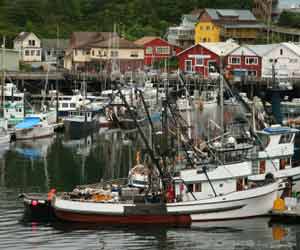Importance of Aquaculture
As the human population continues to grow, finding means to feed those people is one of the most important challenges faced around the globe. Even in troubled economic times, men, women and children need to eat. And a healthy diet, high in protein is necessary to ensure that growing population does not succumb to sickness and disease. Fish and other aquatic organisms fit the model for healthy sources of protein.

Harvests of wild sources of fish, crustaceans and other aquatic species cannot keep up with the demand presented by the growing human population. Trying to match demand through commercial fishing interests would eventually result in over-fishing and the loss of those species entirely. Therefore, while aquaculture is required to meet the human demand, it also relieves the strain on wild species to allow them to continue to be a significant source.
The role of aquaculture in ensuring a consistent supply of aquatic species for human consumption cannot be overstated. Medical research into the health benefits of frequently eating fish is plentiful. One popular buzz word within the healthy eating movement is Omega-3 fatty acids, which are typically found in most fish. Multiple research studies indicate these fatty acids help reduce many forms of cancer and promote healthy brain tissue. Eating fish regularly has also been shown to reduce the risk of heart disease through reducing the probability of clot formation, lowering blood pressure and increasing the good cholesterol levels in the blood stream. Some studies also suggest inclusion of fish into a healthy diet can have a positive impact on the development of Alzheimer’s disease in elderly persons or blood sugar levels in diabetics.
Fish and aquatic species in general are a much healthier source of protein compared to livestock commonly consumed. Beef, pork and chicken all have their positive attributes, but none stand up to the positive attributes of fish.
Professionals in all aspects of agriculture struggle with improving their efficiencies and outputs to meet the food demands of the constantly increasing human population. Aquaculture is no different, and in fact, plays a critical role in this arena. Fish farming is typically much more efficient than cattle or pork production and other forms of agriculture. Land dedicated to fish ponds will produce ten times or more consumable product than the same land used to raise cattle or pork, while requiring significantly less input.
But aquaculture does not exist without drawbacks. Depending on their location, whether it is a landlocked fish pond, or a floating cage in a saltwater estuary, high concentrations of aquatic species can alter or destroy existing wild habitat, increase local pollution levels or negatively impact local species genetic makeup.

